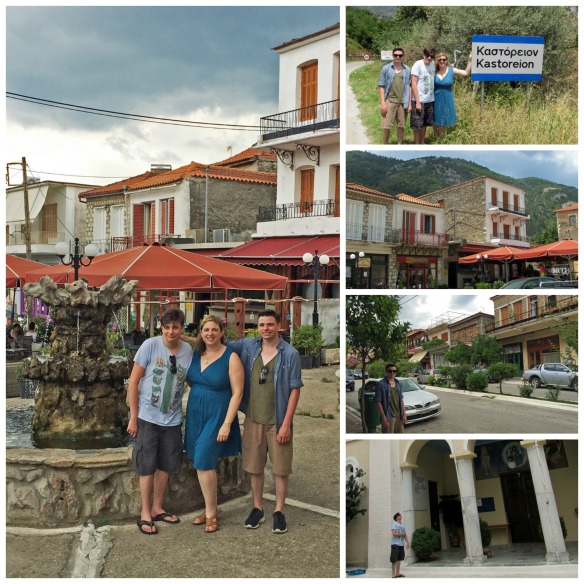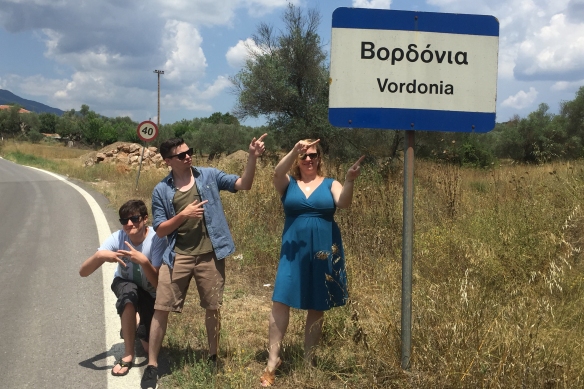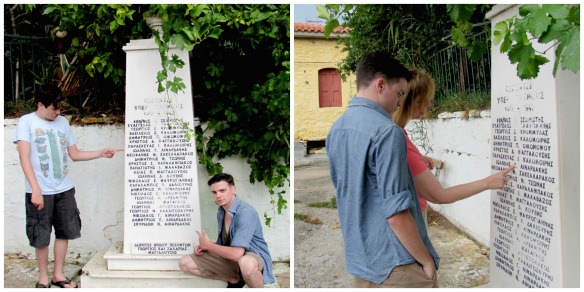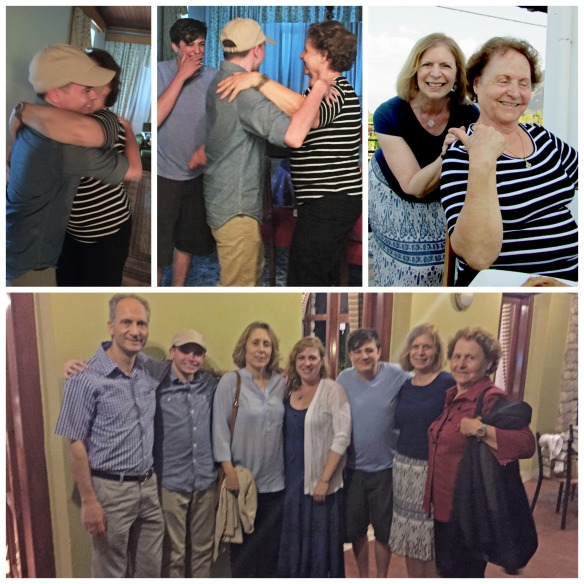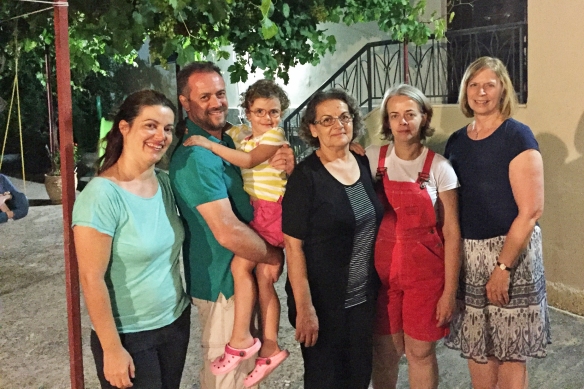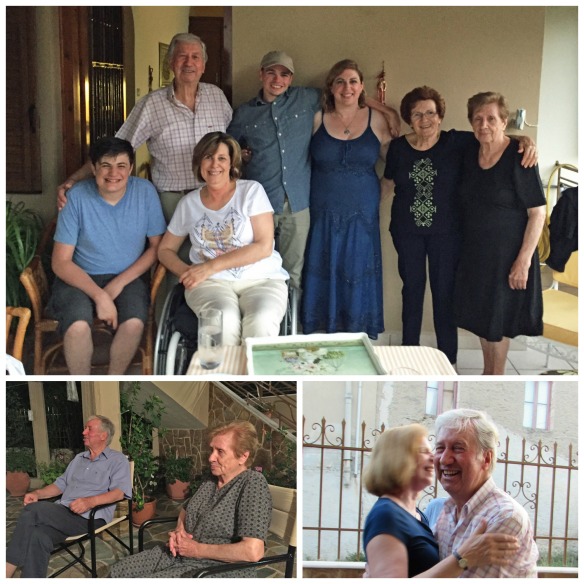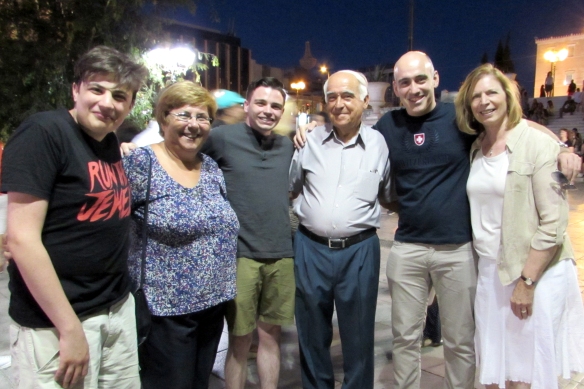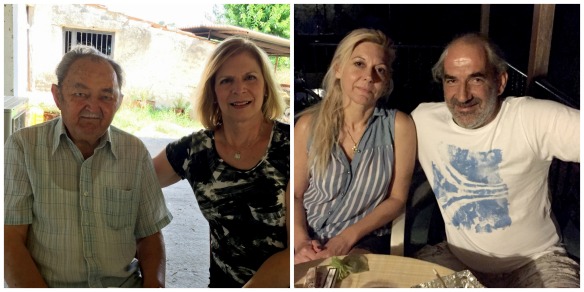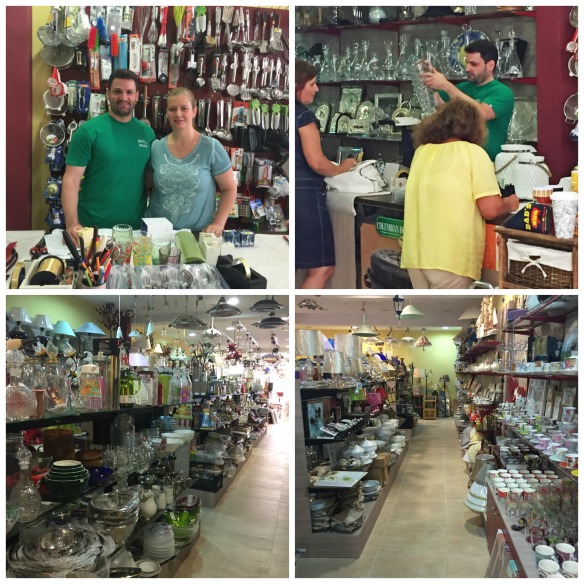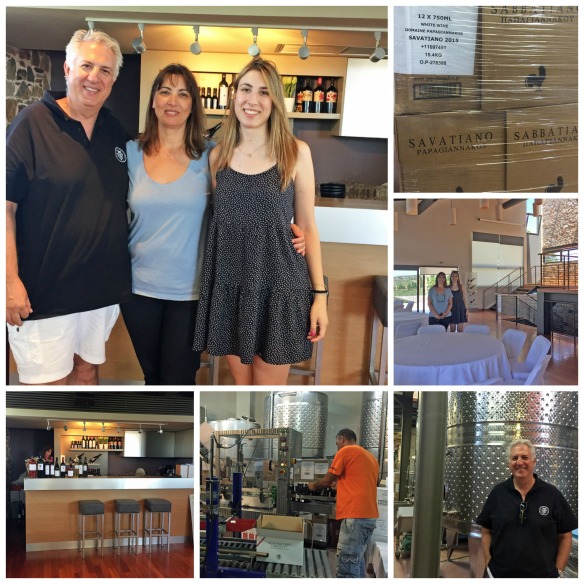Every summer, I look forward to a cooking lesson with my cousin, Eleni Kostakos. Last year, we made κεφτέδες (keftedes, meatballs). This year, δολμάδες (dolmades, stuffed grape leaves) were on the menu. A google search will bring up dozens of recipes, but none are as good as Eleni’s.
Her grape leaves come from her brother’s vines and are picked when young and tender. She freezes them with no loss of flavor. Fresh, even frozen, leaves are infinitely better than the brined and salted ones which come in jars; but since I have to use jarred leaves, Eleni recommends boiling them to remove the salt and vinegar.
Our first task is to cover the table with a laminated brown paper, which absorbs fluids and drips. Next, the meat mixture is prepared.
Ingredients
1 kilo (2 pounds) ground beef
2 very large onions (Eleni used red onions)
3 eggs
1 can tomato paste (6 oz)
1 cup rice, rinsed
salt, pepper (no measurements)
dry mint (a handful, rubbed)
about 1/3-1/2 cup extra virgin olive oil
fresh mint leaves
Directions
1. Soak fresh mint in water.
2. Begin to separate grape leaves. Put a layer in the bottom of a casserole, add a few fresh mint leaves, then another layer of grape leaves and mint.
3. Put ground beef in large bowl.
4. Finely chop onions in a food processor. There should be absolutely no chunks! Add to meat along with tomato paste, eggs, oil, salt, pepper, dry mint and rice.
5. Mix, mix, mix by hand until everything is smooth and shiny. The oil acts like glue to hold the ingredients together. DO NOT use bread crumbs or other fillers.
When the meat is ready, the grape leaves are stuffed. This is a tricky process. When Eleni and her husband were owners of a taverna, her dolmades had to be picture-perfect. She showed me her method of folding the grape leaves around the meat and tucking the ends of the vines inside so there is an exact mitered angle. I tried and failed. So we did it the easy way–by putting the meat inside the leaves, folding in both ends, and rolling. I learned that the meat is put on the bottom side of the grape leaves (where you see the veins), so that the shiny and smooth side is visible after rolling.
The rolled dolmades are carefully placed in the pot on top of the mint and vine leaves. Boiled water is poured over them, the pot is covered, and the dolmades simmer for one hour. If they start to open, put a plate over them. After one hour, drain the liquid from the pot and reserve.
Now comes the lemon-egg sauce — the final touch that gives that unique flavor. Use four eggs and the strained juice of two large lemons. Beat the eggs at least five minutes until they are smooth and creamy. Add the lemon juice one Tablespoon at a time. Finally add about 1/2 cup hot liquid which had been drained from the pot. Pour the lemon-egg mixture over the dolmades and heat thoroughly. Don’t boil or the egg will curdle!
Dolmades can be kept in the refrigerator for one week, and can be successfully frozen. Make a batch and enjoy with traditional Greek salad, olives, feta cheese and crusty bread. You will feel like you are in Sparta!
And next summer’s lesson? Γεμιστά, stuffed peppers and tomatoes ❤






























